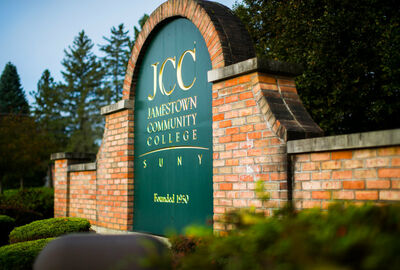SUNY Jamestown Community College will host a special presentation by Justin Schapp, Deer Clan citizen of the Seneca Nation, at 5 p.m. on Nov. 18 in the Weeks Teleconference Hall, located in the Katharine Jackson Carnahan Center on the Jamestown Campus.
“How Do Indigenous People Right a Historical Wrong?” is focused on how the Seneca approached the federal energy relicensing process of the Seneca Power Station. Located at the Kinzua Dam, the effort’s intent was to promote the Seneca Nation from a stakeholder status, to being the owner-operator of the massive hydroelectric facility.
According to Kaycee Colburn, a Haudenosaunee artist in residence at JCC who helped organize this presentation, the Seneca people are one of the only tribes in America that holds the titles to their land. The Kinzua Dam, and accompanying power plant, sit on 10,000 acres of that land, which was home to approximately 600 Seneca people. The dam was deemed necessary to protect Pittsburgh from flooding and pollution. The Nation was never informed the dam would also be used to produce power and generate revenue.
"The Seneca stood in opposition to the removal while they watched their homes be destroyed and taken from them by the Army Corps of Engineers,” Colburn said. “My mom was 10 at the time, and told me that my great grandmother, Cynthia Jimerson, strongly opposed the removal and was told she had to let it happen. This was the first time my mom ever saw her cry and she got real quiet for a long time afterwards."
After legal battles resulted in the United States claiming eminent domain, groundbreaking for the dam began in 1960. According to Schapp, the removal resulted in a massive loss of language and cultural knowledge, as elders passed away in large numbers after the removal.
Schapp said that keeping the Seneca Nation as stakeholders left them powerless to make decisions or benefit from the Kinzua project in any way.
“They wanted natives to stick to the historical properties management,” Schapp said. “I’m speaking to help people really understand water resources and who had to sacrifice for them, and that we don’t reap the rewards. We had to fight and scratch just to get a seat at the table, or even see who was at the table.”
This presentation is made possible through funding received from a grant from Creatives Rebuild New York. The CRNY funding has allowed two Native American artists to be in residence at JCC for two years. For more information on this presentation and other upcoming programs, visit sunyjcc.edu/events.

